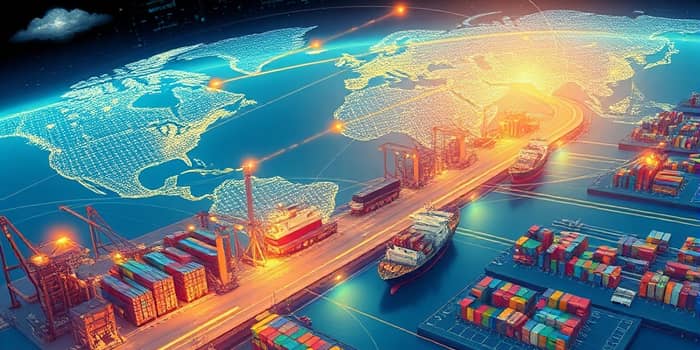
As the world economy strives for post-pandemic recovery, unforeseen obstacles continue to emerge in the form of persistent supply chain bottlenecks. From congested ports to labor shortages, these disruptions are reshaping industrial momentum and challenging every stakeholder in the logistics ecosystem. Leaders and practitioners alike must understand the root causes and practical responses to navigate this volatile environment.
Supply chain interruptions have become a defining feature of early 2025. Driven by a volatile international trade landscape and a flurry of new tariffs under the latest U.S. administration, companies are grappling with rising costs and unpredictable lead times.
On average, a major disruption now strikes every 3.7 years and lasts over a month, straining manufacturers’ ability to return to steady operations. U.S. business logistics costs soared to $2.3 trillion in 2025, underscoring the financial toll of these bottlenecks.
Concrete figures paint a stark portrait of the challenges at hand. In April 2024, average material lead times reached 79 days—down from 100 days in mid-2022 but still above the 65-day pre-pandemic norm.
Meanwhile, the Manufacturing Supplier Deliveries Index climbed from 47 to 48.9 between December 2023 and April 2024, signaling slower supplier performance. Disruptions in the Red Sea threatened to add up to 20 more days of shipping delays, further compounding global delivery schedules.
Multiple interwoven factors contribute to prolonged delays. Geopolitical friction, capacity constraints, and talent shortages all play significant roles in creating and sustaining supply chain chokepoints.
Extended bottlenecks have significantly slowed the pace of industrial rebound. Supply chain shocks account for roughly one-third of recent delivery delays, with the remaining two-thirds driven by surging post-COVID demand.
Despite ongoing technology investments, 40% of companies report poor visibility into Tier 1 suppliers, hampering proactive risk mitigation. Procurement functions are transitioning from purely cost-focused models toward resilience-centric strategies, though volatility and data gaps persist.
Half of all supply chain organizations plan to invest in AI and advanced analytics by the end of 2024, seeking strategic, data-driven solutions to alleviate bottlenecks. Predictive algorithms promise more accurate demand forecasting and dynamic rerouting, while automation accelerates material handling and documentation.
However, technology adoption introduces new complexity. Organizations must address a profound talents and skills gap: 90% of leaders believe their teams lack the expertise to fully leverage digital tools. Failure to upskill supply chain professionals risks wasting investment and erecting fresh barriers to recovery.
Though challenges loom large, there are clear steps that industry leaders can take to fortify their supply chains:
To translate strategy into measurable results, companies should start with focused pilot programs. Identify critical nodes—such as high-value suppliers or key transportation corridors—and apply advanced analytics to detect emerging delays before they escalate.
Simultaneously, cross-functional war rooms can enable rapid decision-making during disruption events. By mobilizing procurement, operations, and finance teams in a centralized dashboard environment, organizations can reallocate resources, reroute shipments, and adjust production schedules in real time.
True resilience requires a cultural shift from reactive firefighting to proactive scenario planning. Regular stress tests of supply networks, akin to financial institutions’ stress testing, can reveal hidden vulnerabilities and guide targeted investments.
By embracing a continuous improvement cycle—where data insights inform strategy, execution, and refinement—organizations can steadily reduce the frequency and duration of bottlenecks. Over time, this disciplined approach will translate into sustained operational agility and reliably shortened recovery timelines.
Supply chain bottlenecks are a formidable adversary, but they also present an opportunity to reimagine how global commerce operates. By integrating advanced technology, cultivating digital talent, and prioritizing resilience, companies can turn persistent challenges into competitive advantages.
The path to recovery is neither linear nor guaranteed, but with decisive action and a commitment to continuous innovation, businesses can navigate today's disruptions and emerge stronger. Now is the moment to invest in robust, agile supply chains that will power the next era of growth and stability.
References













